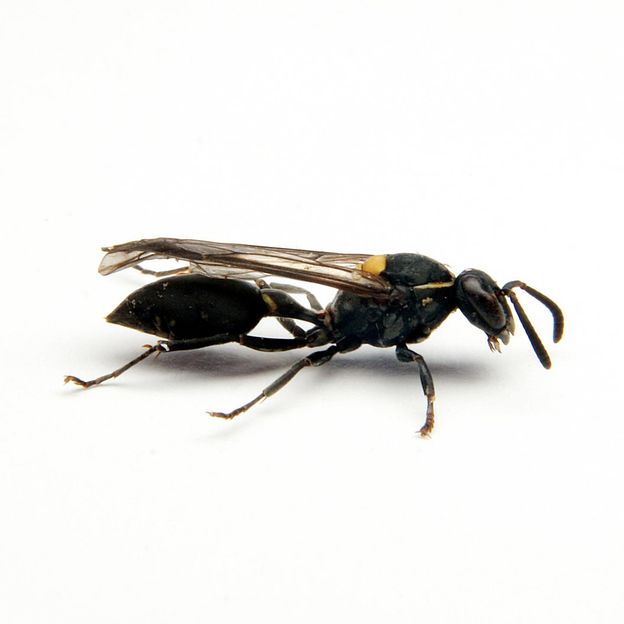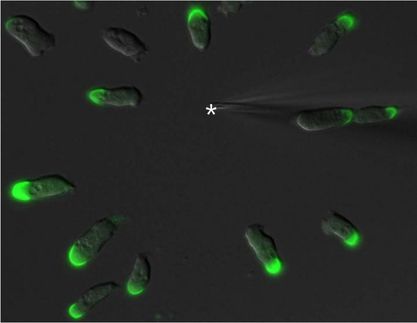Brazilian wasp venom kills cancer cells by opening them up
The social wasp Polybia paulista protects itself against predators by producing venom known to contain a powerful cancer-fighting ingredient. A study reveals exactly how the venom's toxin--called MP1 (Polybia-MP1) - selectively kills cancer cells without harming normal cells. MP1 interacts with lipids that are abnormally distributed on the surface of cancer cells, creating gaping holes that allow molecules crucial for cell function to leak out.

This is the Brazilain social wasp Polybia paulista
Prof. Mario Palma/Sao Paulo State University
"Cancer therapies that attack the lipid composition of the cell membrane would be an entirely new class of anticancer drugs," says co-senior study author Paul Beales, of the University of Leeds in the UK. "This could be useful in developing new combination therapies, where multiple drugs are used simultaneously to treat a cancer by attacking different parts of the cancer cells at the same time."
MP1 acts against microbial pathogens by disrupting the bacterial cell membrane. Serendipitously, the antimicrobial peptide shows promise for protecting humans from cancer; it can inhibit the growth of prostate and bladder cancer cells, as well as multi-drug resistant leukemic cells. However, until now, it was not clear how MP1 selectively destroys cancer cells without harming normal cells.
Beales and co-senior study author João Ruggiero Neto of São Paulo State University in Brazil suspected that the reason might have something to do with the unique properties of cancer cell membranes. In healthy cell membranes, phospholipids called phosphatidylserine (PS) and phosphatidylethanolamine (PE) are located in the inner membrane leaflet facing the inside of the cell. But in cancer cells, PS and PE are embedded in the outer membrane leaflet facing the cell surroundings.
The researchers tested their theory by creating model membranes, some of which contained PE and/or PS, and exposing them to MP1. They used a wide range of imaging and biophysical techniques to characterize MP1's destructive effects on the membranes. Strikingly, the presence of PS increased the binding of MP1 to the membrane by a factor of 7 to 8. On the other hand, the presence of PE enhanced MP1's ability to quickly disrupt the membrane, increasing the size of holes by a factor of 20 to 30.
"Formed in only seconds, these large pores are big enough to allow critical molecules such as RNA and proteins to easily escape cells," Neto says. "The dramatic enhancement of the permeabilization induced by the peptide in the presence of PE and the dimensions of the pores in these membranes was surprising."
Original publication
Other news from the department science

Get the life science industry in your inbox
By submitting this form you agree that LUMITOS AG will send you the newsletter(s) selected above by email. Your data will not be passed on to third parties. Your data will be stored and processed in accordance with our data protection regulations. LUMITOS may contact you by email for the purpose of advertising or market and opinion surveys. You can revoke your consent at any time without giving reasons to LUMITOS AG, Ernst-Augustin-Str. 2, 12489 Berlin, Germany or by e-mail at revoke@lumitos.com with effect for the future. In addition, each email contains a link to unsubscribe from the corresponding newsletter.



















































